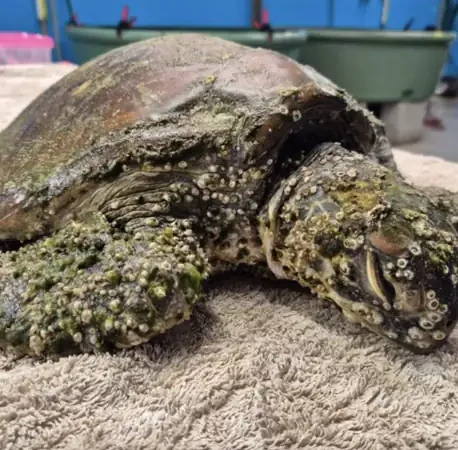Meet Kalani: a spirited Australian sea turtle, whose story begins in a heartbreaking place.
Back in January, a passerby found Kalani stranded on Lennox Head Beach in New South Wales. The Good Samaritan called rescuers at Australian Seabird & Turtle Rescue (ASTR), who quickly headed to the scene.
Team members took Kalani to their rescue center, where they conducted a quick examination before moving her to Byron Bay Wildlife Hospital for a full assessment. Vets found that Kalani suffered from extreme lethargy. The poor turtle was covered in epibiota, organisms that live on the surface of a marine animal, like algae, barnacles and leeches. She also had an injury on her left flipper.
Rescuers devised a treatment plan and got to work. They scraped the epibiota off of Kalani’s body, gave her medication, and monitored her very closely. Kalani’s recovery proved slow, but rescuers never gave up. After a few weeks, Kalani finally began gaining weight. Today, the resilient turtle looks completely different.
